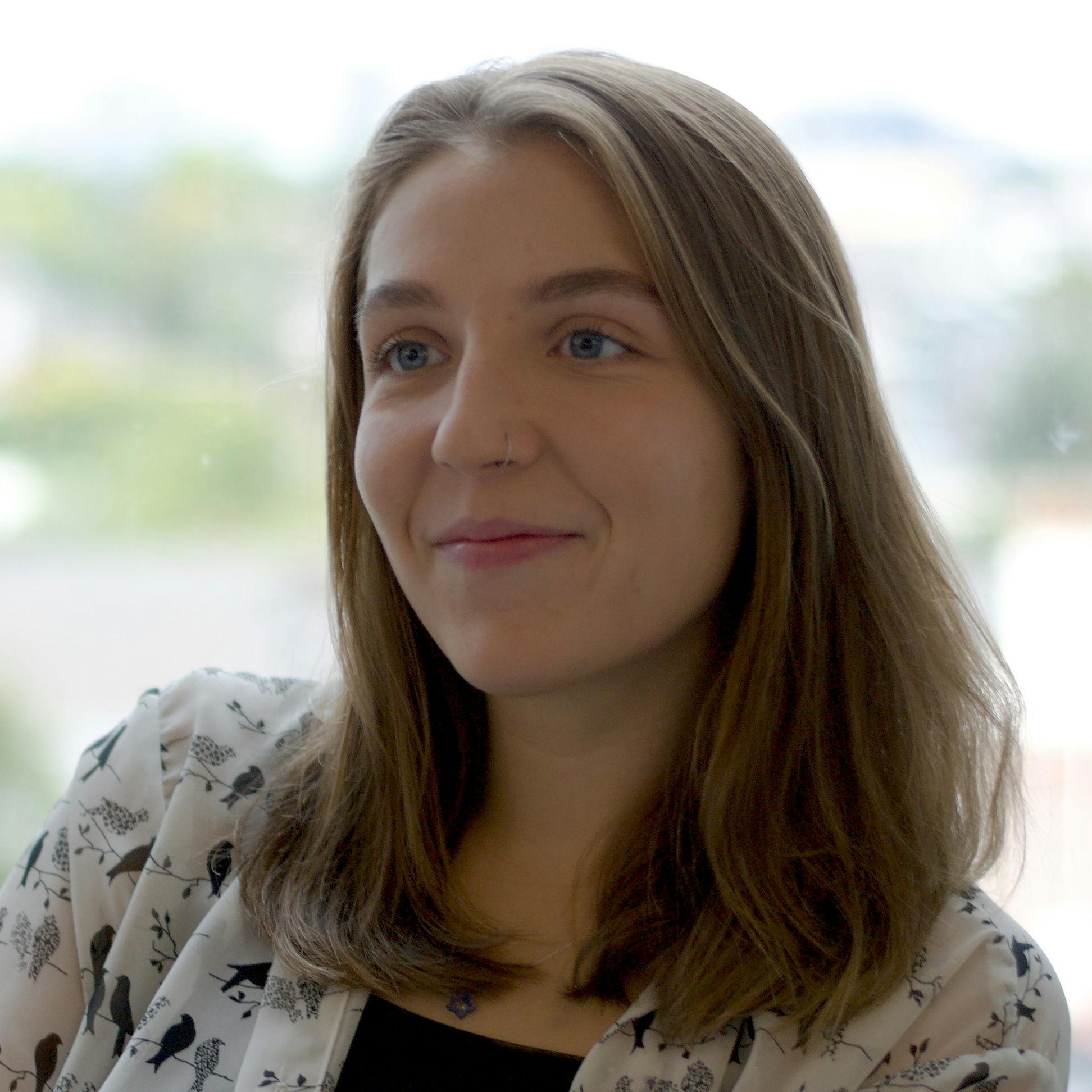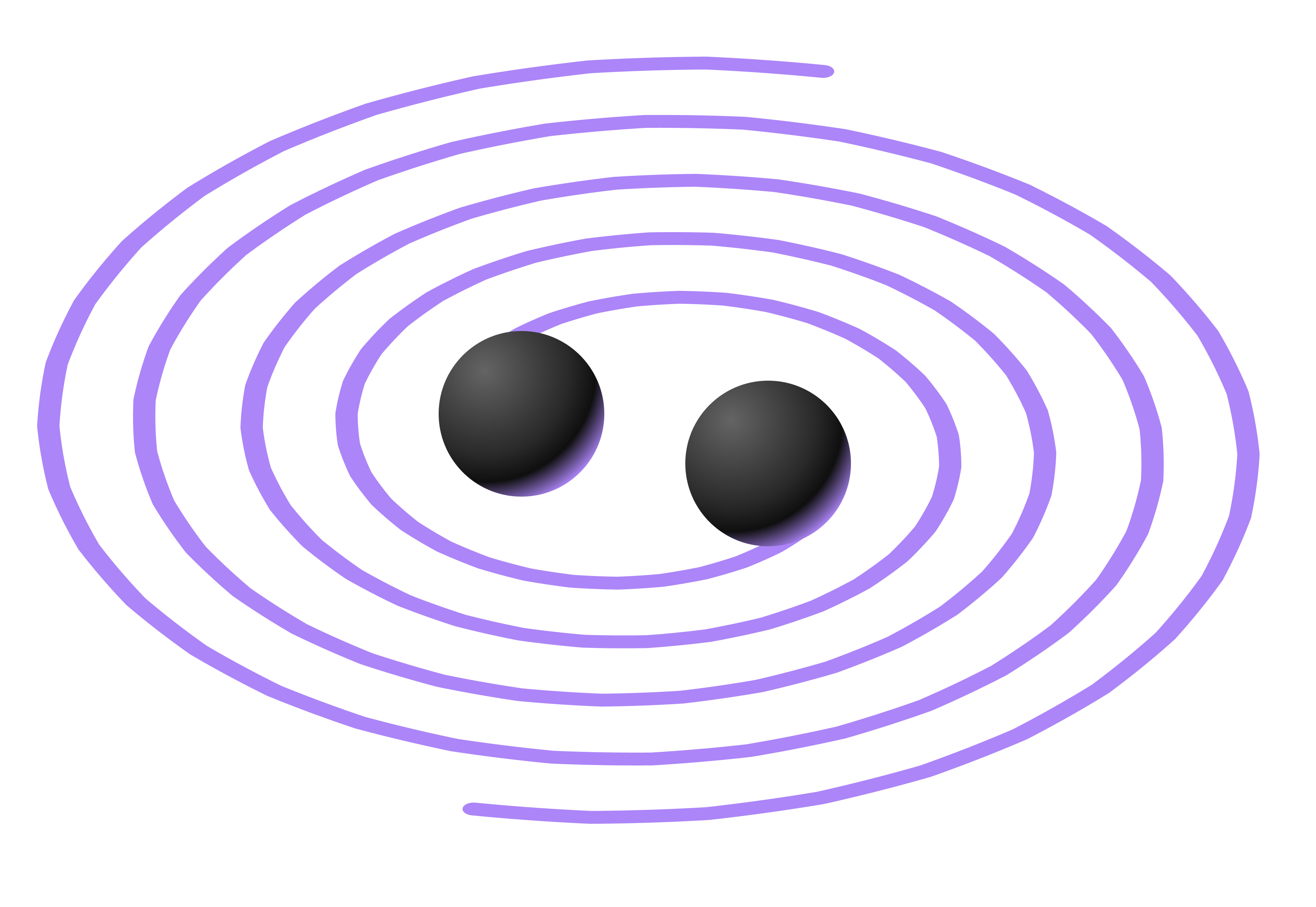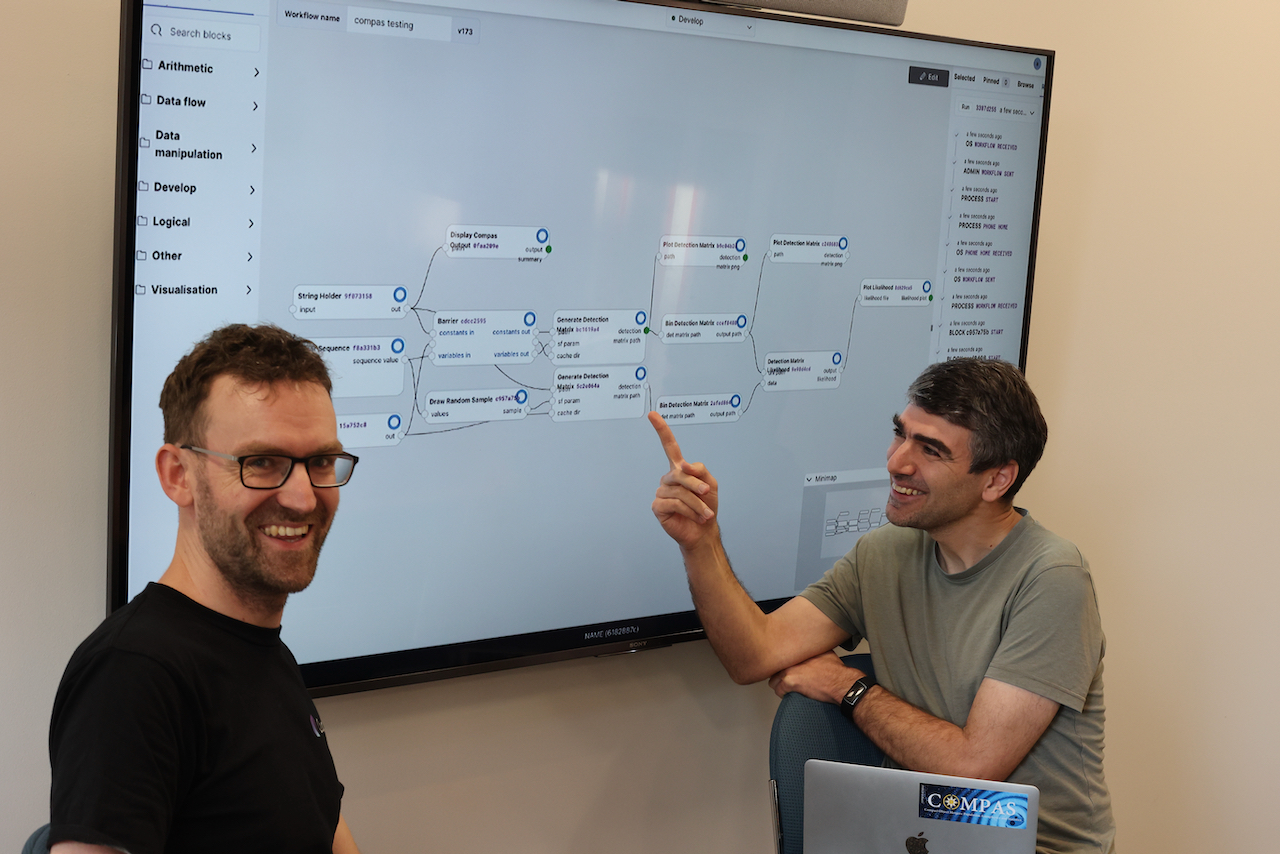Black Holes & Simulations

Madeleine Hall
Somewhere in the universe – in a galaxy far, far away – two black holes just smashed into each other.
This collision sent a signal out across the universe, in the form of gravitational waves travelling at the speed of light. Thanks to recent advances in technology for gravitational-wave detection, we are able to pick up the signal right here on Earth.
Quaisr is empowering scientists to interpret and understand these signals.

Gravitational waves
Since gravitational waves were first detected in 2015, scientists have been collecting data on a range of different astrophysical events, such as black-hole mergers and neutron star collisions. Researchers are working hard to analyse this data, in order to address questions concerning exactly how these events unfold.
Professor Ilya Mandel, a scientist at Monash University, has been pondering such questions in the years since he played an active role in the initial breakthrough. Mandel was on the team at LIGO who, on 14 September 2015, made the first-ever direct observation of gravitational waves. This set off a new era of gravitational-wave astronomy, and led to the 2017 Nobel Prize in Physics being awarded to the key players in LIGO's development.
Mandel's team at Monash now researches massive binary evolution: how pairs of orbiting stars, termed stellar binaries, evolve over the course of their lifetimes. They use gravitational-wave data as an "astrophysical probe" for understanding this phenomenon.
Our capacity to measure astrophysical events is increasing: new observatories are being built, and measurement tools are becoming increasingly sensitive. The dataset — our catalogue of events – is growing rapidly. It's an exciting time for researchers. "We currently have just under 100 observations in our war chest, but the upgraded detectors, which are expected to turn on next month, may double or triple this data set within a year," says Mandel in anticipation.
With huge data releases on the horizon, new discoveries in the field are imminent. Now is the time for scientists to prepare for understanding and interpreting this new data when it arrives. This preparation is critical for Mandel: "Monash researchers need to be one step ahead when the data arrives, and we are collaborating with Quaisr to prepare data-processing workflows and AI pipelines."
"Monash researchers need to be one step ahead when the data arrives, and we are collaborating with Quaisr to prepare data-processing workflows and AI pipelines."
— Professor Ilya Mandel, Monash University
Mandel is pushing towards new discoveries, and to do this efficiently he needs to be able to seamlessly link different steps of the process. He explains, "Speed and preparation will enable exploration and discovery, but only if multiple existing systems can be integrated! Those systems are data feeds from the observatory, a binary merger simulator, and new AI algorithms for rapidly emulating batches of binary-merger simulations."
Stellar binary systems can be described and understood with the help of mathematical models, and modelling stellar binaries is now possible thanks to new theoretical frameworks and simulation tools. Astrophysics theory provides equations which Mandel’s team can implement with code in order to build computational models. These models can be extremely complicated, often involving dozens of parameters, for many of which we don’t know the exact values, only ranges of possible values.
Scientists like Mandel rely on simulations of models in order to draw a better picture of what’s going on. These simulations can then be compared to observations from the data, via Bayesian inference and surrogate models, to improve computational efficiency – helping us to understand whether the models are accurate in capturing what’s really happening in these stellar binaries.
Babysitting simulations
Unfortunately, the process is not exactly straightforward. For Mandel, each simulation requires making a set of assumptions about the parameter values, and then up to a million binaries need to be modelled for each set of assumptions. Even when the model is drastically simplified – to around only 10 parameters – testing 10 different values for each of the parameters results in 10 billion simulations of a million binaries each!
Depending on the model complexity, for many real-world problems a single simulation can take hours to complete. Accounting for the comparison between simulation and observational data, the entire process can be exhausting and mind numbing. Babysitting each step in this process is a drag on time for scientists like Mandel, whose limited hours are much better spent doing what they do best: devising new theories for stellar binaries.
Thanks to Quaisr, Mandel’s days of babysitting are no more.
Empowering advancement
Quaisr transforms this sequence of steps to a seamless, automated workflow. Instead of having to babysit the simulation process, Quaisr provides Mandel with the infrastructure to reliably link the data to simulation. "The ability to easily set up a workflow with Quaisr tools allows us to focus on understanding fundamental physics rather than being distracted by computational nuisances," he shares.
The Quaisr platform empowers teams to create, connect and consolidate ingenuity across a breadth of complex organisations and contexts: from multinational engineering organisations, to research groups exploring how stars collide. Mandel’s group is using Quaisr to build workflows that automate handling streams of data. Quaisr also provides the powerful, data-driven tools for surrogate modelling, which mimic the behaviour of simulation models as closely as possible while being more computationally efficient to evaluate.
Mandel’s group are using Quaisr to flow from step to step: initial positioning in the parameter space, running simulations, building surrogate models, and performing inference on parameters. The Quaisr platform then provides the power to automatically compare data from surrogate models and observational data, which informs the next initial position in the parameter space – and this iterative process repeats via automation.

The workflows can be built, edited and explored all through Quaisr's user interface. The intuitive design of the Quaisr web application presents the layout and workflow process in a way that makes the process accessible to researchers at any level. Undergraduate students can now run complex data analysis, without going through a multi-year learning curve, where they were previously blocked due to high levels of technical complexity.
One small step for Mandel…
Since Quaisr’s arrival, Mandel and his research group are more prepared for the newly incoming gravitational-wave data: "We are now ready to embark on the next step: the development of a robust, accurate, discovery-ready infrastructure for inferring astrophysics and cosmology from gravitational-wave data."
Empowering advancement through simulation, Quaisr is providing the tools for Mandel’s team to build machine-learning based, computationally efficient models of binary astrophysics. The tools will enable a shift and acceleration in our ability to learn from this emerging new field of gravitational-wave astronomy. Quaisr CEO Lachlan Mason added, "It’s been very exciting to see the impact of our approach on astrophysics research. This international partnership has strengthened confidence in the technology, particularly for our wider industrial users."
"This international partnership has strengthened confidence in the technology, particularly for our wider industrial users."
— Lachlan Mason, Quaisr CEO
This one small step for Mandel, with the help of Quaisr, could lead to giant leaps in discovery for humankind.